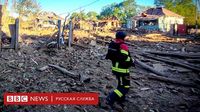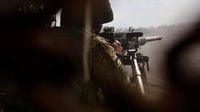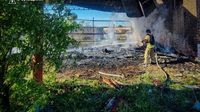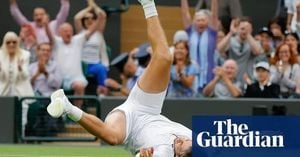As the conflict between Ukraine and Russia continues to unfold, the situation has become increasingly tense following the announcement of a three-day ceasefire by Russian President Vladimir Putin, which came into effect on May 8, 2025. This unilateral ceasefire, intended to coincide with the 80th anniversary of Victory in the Great Patriotic War, has been met with skepticism and accusations of violations from both sides.
According to reports from the Ukrainian military, they received orders to only return fire during the ceasefire, a directive that echoes similar orders given during the previous "Easter truce" in April. This information was relayed by servicemen from three units of the Ukrainian Armed Forces (UAF) operating in the Pokrovsk direction in the Donbas and southern Ukraine, as reported by the Ukrainian media outlet Suspilne.
Despite the ceasefire, Ukrainian President Volodymyr Zelenskyy has expressed his disapproval of a mere three-day pause in hostilities, advocating instead for a longer cessation of at least 30 days. Zelenskyy stated, "Russia must end its aggression. It is a matter of time. War is a loss for everyone, including the aggressor." He emphasized that the proposal for a longer ceasefire remains on the table, as it could provide an opportunity for diplomacy.
On the morning of May 8, reports indicated a notable decrease in drone attacks over both Ukraine and Russia compared to previous nights. However, Ukrainian officials maintain that Russian forces have not ceased their military operations. Viktor Tregubov, a spokesman for the operational-strategic group of troops "Khortitsa," noted, "The enemy is less active now, but we cannot talk about a truce. There have been over 60 combat engagements reported today, including in the Limansky, Volchansky, Kramatorsky, and Pokrovsky directions." He added that the fighting continues, contradicting claims of a ceasefire.
In stark contrast, the Russian Ministry of Defense claimed to be adhering strictly to the ceasefire regime, accusing the UAF of violating it nearly 500 times since the ceasefire began. They stated, "The Armed Forces of the Russian Federation are responding appropriately to violations by the Ukrainian Armed Forces and will continue to act according to the situation." This statement was met with skepticism from Ukrainian officials, who pointed out that civilians in regions such as Sumy and Kharkiv have continued to suffer from Russian assaults.
In the Sumy region, local authorities reported that a woman was killed and her son injured due to Russian airstrikes, which took place despite the announced ceasefire. Additionally, in the Kharkiv region, three women sustained injuries from a drone strike on a civilian vehicle. These incidents have raised concerns about the safety of civilians amidst the ongoing conflict.
Ukrainian Foreign Minister Andriy Sybiga described the ceasefire as a farce, stating that, "Despite Putin's announcements, Russian troops continue to attack along the entire front line." He reported 734 violations of the ceasefire and 586 attacks on Ukrainian positions, with a significant portion involving heavy artillery and drone strikes.
As the situation develops, the Kremlin continues to prepare for the May 9 celebrations, with leaders from over 25 nations, including Chinese President Xi Jinping, expected to attend. This gathering has been interpreted by some as an attempt by Russia to project strength and solidarity amid international isolation.
In a joint statement following a meeting between Putin and Xi, both leaders expressed their commitment to strengthening military cooperation while emphasizing the need for a long-term resolution to the Ukrainian crisis. Putin reiterated his stance on addressing the "root causes" of the conflict, which he claims include NATO expansion and Ukraine's aspirations to join Western alliances.
As the three-day ceasefire progresses, the reality on the ground suggests that hostilities are far from over. Ukrainian military officials have reported a total of 117 combat engagements since the ceasefire began, with significant activity in the Pokrovsky and Limansky directions. Tregubov highlighted that while the enemy's activity appears reduced, the absence of a genuine truce is palpable.
The ongoing conflict raises critical questions about the effectiveness of temporary ceasefires and the prospects for lasting peace. As Zelenskyy pointed out, the need for a substantial ceasefire remains urgent, and the international community watches closely as the situation unfolds.
In the meantime, both sides continue to exchange accusations regarding violations, with little indication that a true cessation of hostilities is forthcoming. The complexities of the situation highlight the challenges faced in achieving a peaceful resolution, as both military and diplomatic efforts continue to grapple with the realities of war.






